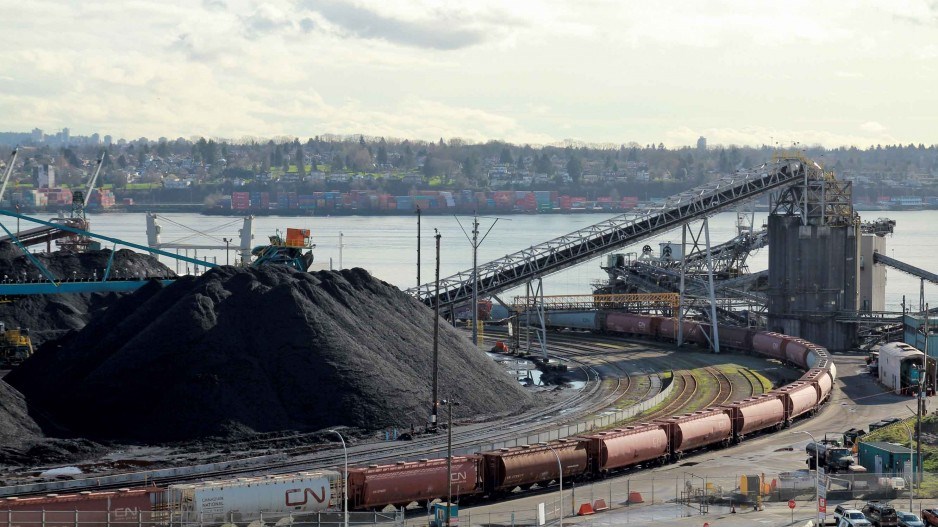Given the pounding B.C.’s mining sector has taken, the Business Council of British Columbia (BCBC) had hoped to see some relief for the sector in last week’s provincial budget.
Specifically, it had hoped that B.C. miners would get a break on the provincial sales tax.
Mining and forestry already get a PST exemption on big-ticket machinery and equipment. But mines also spend an enormous amount of money on electricity, which is subject to the PST, and some B.C. mines are currently teetering on the brink of closure.
“We were sort of hoping there would be some little bit of relief for the mining industry, [and] other resource industries,” said BCBC chief economist Ken Peacock.
Instead, what the B.C. business community got was a promise of a new commission that will consider a range of tax reforms, although Finance Minister Mike de Jong made it clear that scrapping the PST and taking a second stab at a harmonized sales tax is not on the table.
Peacock is hoping that medical insurance premiums will also be part of that commission’s review. Medical Services Plan premiums will increase 4%, and for businesses that pay those premiums on behalf of employees, it’s essentially a tax increase.
Although disappointed with the absence of PST reforms, the BCBC generally praised last week’s budget. So did other industry associations, including the Association for Mineral Exploration British Columbia and the Truck Loggers Association.
Debt reduction has resulted in a $500 million savings in debt servicing costs over three years. That and a $377 million surplus for the 2015-16 fiscal year will allow its government to seed the new “prosperity fund” with $100 million.
That fund, similar to Alberta’s $17 billion Heritage Fund, was supposed to be funded from revenue from a liquefied natural gas industry (LNG) that has yet to materialize.
Such legacy funds are based on the notion that some of the revenue generated from a non-renewable resource like oil and gas should be set aside for future generations.
“Theoretically it’s great,” Peacock said. “B.C. was going to do it, and talking about doing it from all the bounty from LNG that we were supposed to get. Of course, that hasn’t come to pass. I think it’s a bit of meeting a political commitment to create a prosperity fund – doing it when we don’t have any LNG in place.”
De Jong said he still believes B.C. will see an LNG industry develop.
“I’m not nearly as pessimistic about the prospect for LNG as apparently some are, particularly given the investments that have taken place and the work that has been done,” he said.
The budget includes $19 million in spending over three years for natural-gas-related activities, including First Nations engagement and consultation. It also includes $13 million in funding for the Innovative Clean Energy Fund, which includes money for a rebate program for electric and fuel cell cars.
Natural resource revenue is projected to drop 7.2% in the 2016-17 fiscal period, as a result of lower Crown land sales and low commodity prices. Revenue from natural resources is projected to decline 15.2%.
In total, revenue from energy, metals and minerals is expected to drop from $1.2 billion in the 2015-16 fiscal period to $825 million by 2018-19.
Over the next three years, revenue from the sale of Crown land tenures is forecast to decline 65% from $767 million in 2015-16 to $268 million in 2018-19.
But so far, declining revenue from natural resources are being offset by consumer spending, employment growth and other sectors, including real estate, retail, tourism, film, agriculture and seafood.
Vancouver’s film industry, for example, is booming, as a result of tax credits and a low Canadian dollar. The government is now considering reducing credits to the film and TV industry.
Retail sales have been a key economic driver for B.C., with a 6.8% increase since November 2015, and employment is exceeding growth projections of 1.2% growth in 2015.
“I would probably put the fact that we’re diversified right at the top of the list of why we’re doing relatively well, right alongside the weaker Canadian dollar,” Peacock said. “There is no doubt we are much more diversified than other provinces.”
He added, “Agricultural exports are now rivalling mining exports in terms of value.”
Peacock credits the provincial government with aggressively marketing B.C. products – from seafood to wine and lumber – in Asia for the increasing value of B.C. exports.
It is continuing that push by allocating funding for specific sectors, including:
•$5 million for marketing B.C. wood and lumber products in India;
•$1 million to help attract international shipping companies to B.C.; and
•$1 million to support B.C.’s aerospace sector.
The government has also allocated $75 million for a three-year rural dividend program to help resource-dependent communities diversify their economies.
For more budget coverage on measures to address real estate price, see Vancouver real estate: is it supply and demand, or foreign capital?




